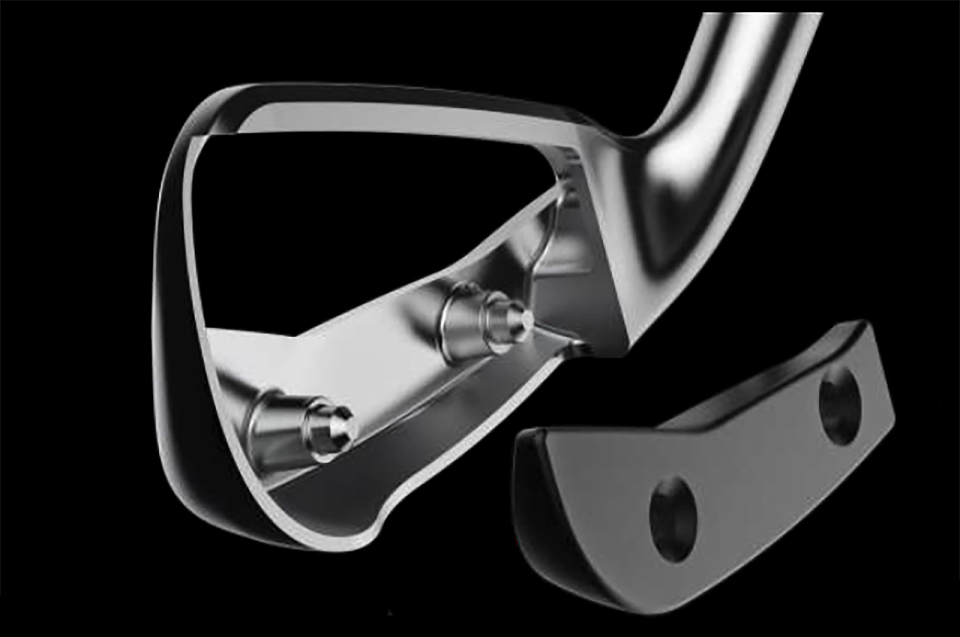Cobra Aerojet, Aerojet One Length irons

Gear: Cobra Aerojet, Aerojet One Length irons
Price: $999 with KBS Tour Lite steel shafts and Lamkin Crossline grips. $1,099 with KBS PGi graphite shafts
Specs: Cast stainless steel head with an internal weight bar and polymer vibration dampener.
Available: February 10
Who It’s For: Golfers who want more ball speed, distance and height from their irons.
The Skinny: The Aerojet irons are game-improvement clubs with a unique internal weighting system and face designed to create more distance and provide a higher-launch angle.
The Deep Dive: Cobra offers several iron options for players who put a premium on hitting draws and fades and working the ball around the golf course, from the King Tour to better-player distance offerings like King Forged TEC. But most golfers, however, need game-improvement irons because they lack a consistent swing and do not generate much power. For them, Cobra has released the new Aerojet and Aerojet One Length irons, which put a premium on speed and forgiveness.

The Cobra Aerojet irons have a clean look at address. (David Dusek/Golfweek)
In the address position, the Aerojet irons have a moderately-thin topline and show a modest amount of offset and a clean game-improvement look. It’s what you can’t see, a new internal weighting system, that Cobra feels will make a significant performance difference.

The PWR Bridge affixes to two posts in the back and drops the center of gravity location. (Cobra)
Designers have added two small posts inside the head of each Aerojet iron that extend forward, toward the face. The posts hold a 70-gram steel weight that runs from the heel to toe and suspends it behind the hitting area. Cobra calls it PWR Bridge, and according to the company, the position of the weight drives down the center of gravity (CG) location to encourage a higher-launching shot. However, because the weight does not touch the hitting area or the club’s sole, it does not inhibit the face from flexing at the moment of impact.

PWRShell’s L-shaped face wraps under the club’s leading edge. (David Dusek/Golfweek)
That’s good because Cobra’s designers gave the Aerojet irons a PWRShell face insert designed using artificial intelligence. After breaking the hitting area into 15 zones, engineers instructed computers to simulate shots and create the best combination of thick and thin areas to maximize distance across the largest possible area. The PWRShell’s L-shaped face wraps under the club’s leading edge, which helps it flex more efficiently on low-struck shots. According to Cobra, the face of the Aerojet irons deflects 10 percent more than the hitting area of last season’s LTDx irons, resulting in about 2 mph more ball speed, more consistent spin rates and about 3.5 to 4 yards more distance.
Working together, the PWR Bridge weight and PWRShell face are designed to help golfers generate more ball speed, protect ball speed on mis-hits and create shots that fly higher and land softer for better distance control.
To improve sound and feel, Cobra injects a polymer to fill the area around the PWR Bridge that soaks up excessive vibrations.

The Cobra Aerojet irons have strong lofts, but get the ball up easily. (David Dusek/Golfweek)
Like many other modern game-improvement clubs, the Aerojet irons have strong lofts (the 5-iron is 20.5 degrees, and the pitching wedge is 41.5 degrees). However, because the CG location is so low, shots go through the windows that golfers expect. They simply hit their peak height further downrange.
In addition to traditional-length sets, Cobra offers the Aerojet in a One Length version. All the technologies found in the standard Aerojet are in the One Length clubs, but they are all 37.25 inches long, which is the typical length of a 7-iron. According to Cobra, many golfers find One Length irons help them increase consistency because they make better contract more and only require learning one type of swing.
